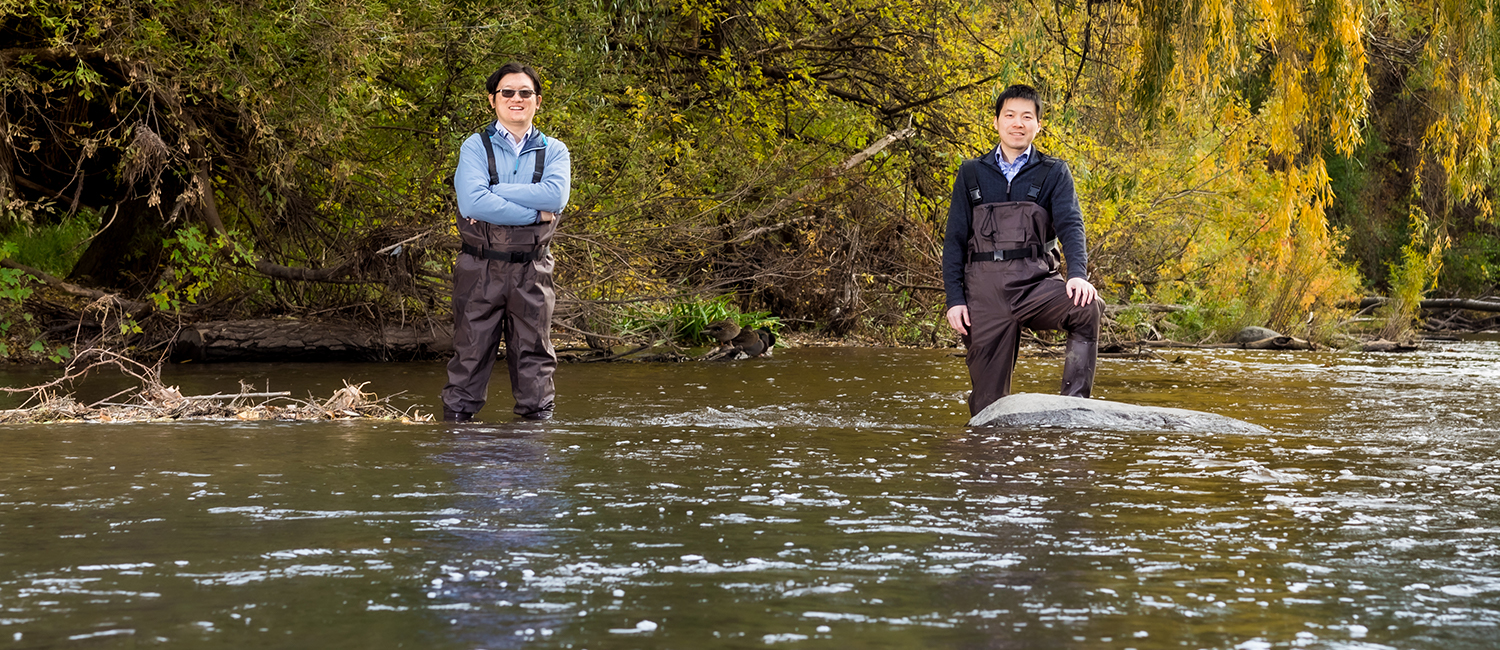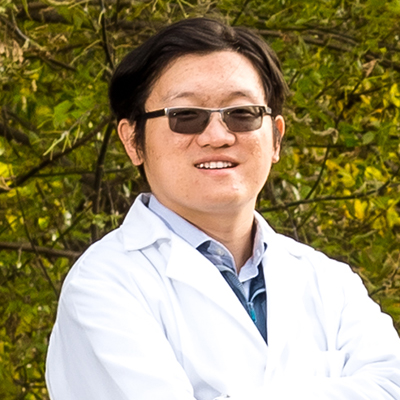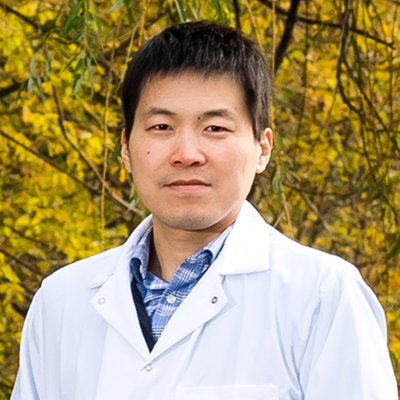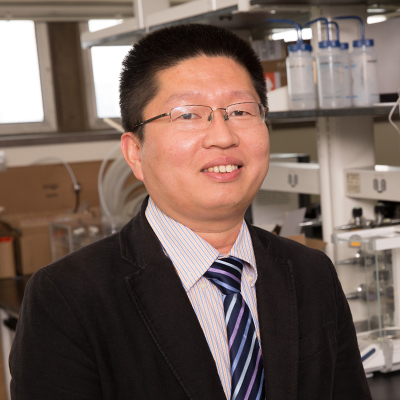
Making a splash
UWM researchers are developing innovative ways to filter contaminants from water, including insidious “forever pollutants.”
No life, as we know it, exists without water. And though more than 70% of Earth’s surface is covered in the stuff, only about 3% of it is fresh, and less than 1% is drinkable. Humanity has pursued a constant quest to find this water and – as our technology has progressed – purify it so that it’s free of harmful bacteria and toxins.
UWM College of Engineering & Applied Science researchers Junjie Niu, Yin Wang and Xiaoli Ma have taken up that quest. They’re working with local, state and federal agencies to develop cutting-edge technologies that will ensure safe and clean water.
Although about 90% of Americans get tap water from community systems subject to safe drinking standards, many contaminants like lead or mercury still seep into the supply. As our ability to detect nanoscopic particles progresses, scientists and researchers are finding more all the time.

Among the most prevalent are perfluoroalkyl and polyfluoroalkyl substances (PFAS) – man-made chemicals such as PFOA, PFOS, GenX and others. PFAS come from things like household cleaning products, food packaging, nonstick cookware and water-repellent clothing. These chemicals persist in the environment because they don’t break down. Instead, they accumulate over time, both in pipes and in the body. This has earned them the nickname “forever pollutants.”
But just as our capacity to spot pollutants is accelerating, so, too, is our ingenuity in developing ways to combat them. Here’s how research by Wang, Ma and Niu is helping the cause.
Yin Wang, associate professor of civil and environmental engineering, and Xiaoli Ma, assistant professor of materials science and engineering
In 12 years of researching water and dozens of different water contaminants, Wang has faced a persistent problem with testing. Typically, scientists measure the level of pollutants and bacteria in a reservoir or water supply by drawing active samples, then testing those vials on site or back at the lab. The drawback is that what they’re seeing under the microscope is really just a snapshot – a literal drop in the bucket.
“An active sample works if you want to know the concentration of a particular contaminant at one point in time,” Wang says. “But if you can get a passive sample, where water flows through for a month or so, it gives you a better idea of how much PFAS is in the water.”
Now, Wang and Ma are developing a passive sampler that can monitor the presence of PFAS in water flow over time. The project is backed by a one-year, $200,000 grant from the U.S. Department of Defense Strategic Environmental Research and Development Program.
The breakthrough was finding materials that can pull PFAS from the passing water and be cost-effective for government agencies to deploy. The group focuses on nanoporous materials for efficient PFAS capture and ceramic membranes as a robust barrier.

“The ceramic membrane barrier can control the PFAS transfer,” Ma says. “It can be tailored to meet the specific needs of different monitoring activities. And the membranes we’re going to make in my lab are very robust and strong and resistant to fouling.”
Wang is part of a team that was recently awarded $420,000 by the National Science Foundation Environmental Engineering program to look into new bioinspired catalysts for water and wastewater treatment. These catalysts will destroy pollutants like perchlorate, nitrate and bromate from groundwater. Wang is also working closer to home with UWM’s Department of Geosciences to survey the presence and concentration of arsenic and pesticides in well water in southeastern Wisconsin. And he’s developing several new adsorbent materials for PFAS removal.
Wang and Ma recently earned a Catalyst Grant from the UWM Research Foundation and are continuing to work with membranes and adsorbents to remove heavy metals, organics, pharmaceuticals and PFAS from drinking water and wastewater.
The research has made tremendous progress in using membrane technology for chemical separation and the removal of salt from water flow, a low-cost solution to desalinating seawater, which could make it suitable for drinking and have tremendous impact around the world.
Using membrane technology offers several advantages over other purification options. “It can run continuously without need for maintenance,” Ma says, “and it is cleaner and more energy-efficient than other separation technology.”
Junjie Niu, associate professor of materials science and engineering
Niu’s research is traveling down another promising path to water purification. He’s working with the Wisconsin Department of Natural Resources to develop hybrid materials that can chemically degrade PFAS.
Popular water treatment approaches can involve anything from boiling, filtration or sedimentation to remove pollutants. But Niu has found a way to remove short-chain fluorinated molecules and other harmful organic molecules by creating porous materials that cover a relatively large surface area. These materials absorb almost all of the PFAS, which are then passed through a photocatalytic ultraviolet light that degrades the molecule to nontoxic levels.

“If you do incineration, you can destroy the molecules. But it needs energy consumption,” Niu says. “Using the photocatalytic degradation at room temperature, we don’t waste the energy to destroy the PFAS.”
Niu is also working with local companies to research biocides that can suppress waterborne strains of harmful bacteria like E. coli. These biocides contain biodegradable polymers that prevent bacterial growth on metal, plastic and glass. They could be used to coat everything from camera lenses to fish tanks to prevent biofilm. More importantly, they could be used on filters and pipes to protect the water supply.
In other research, Niu is looking into hybrid materials that can remove heavy metals – such as lead, copper, iron, cadmium, arsenic and mercury – from water. Some of the materials Niu is researching can also filter out earth metals like calcium, gases and even some viruses. He’s also filed two patents on coatings that are self-cleaning and improve the sensitivity for underwater devices. These are activated when wet and could be applied to everything from car windshields to toilets, decreasing the need for cleaning while saving water.